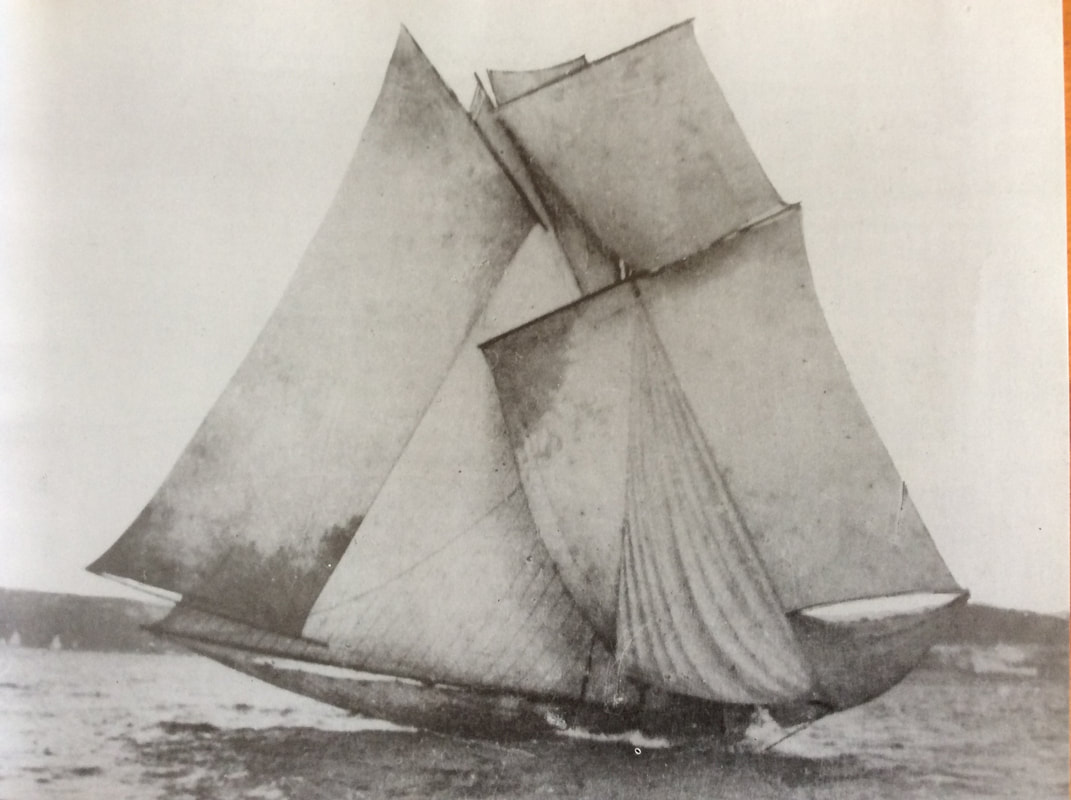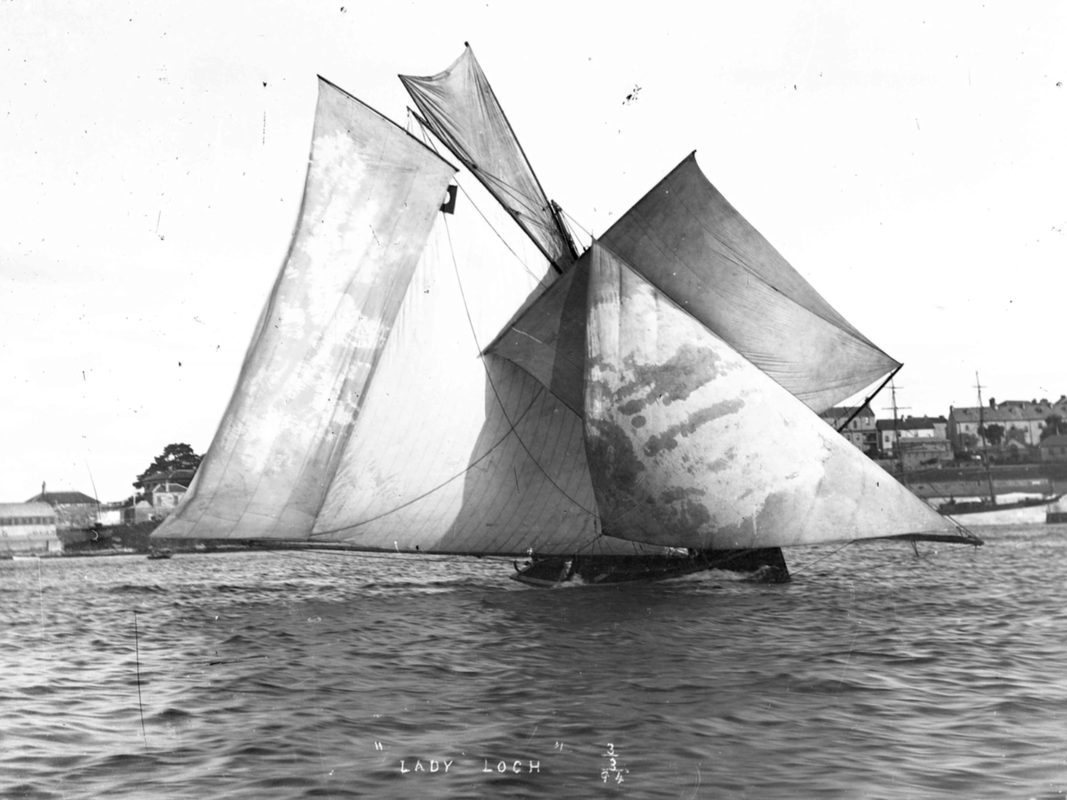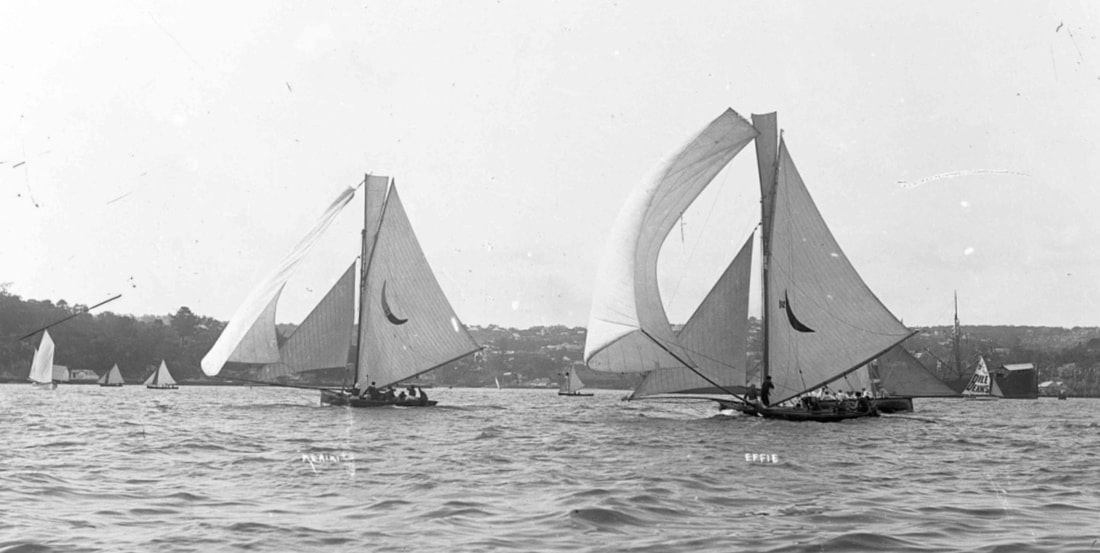Open boats were racing on Sydney Harbour and elsewhere long before spinnakers were invented. From at least as early as the 1850’s and probably earlier Sydney’s open boats hoisted squaresails on downwind legs. These were pre-centreboard days, and the open boats were deep-hulled boats with considerable deadrise (v-shaped in section), ballasted with iron pigs or rocks. After centreboards came into general use in the mid-1870’s boats began to get beamier, crews became more numerous and sails began to get bigger, and squares’ls remained in use.
The 22-footer Secret with everything up, main and jib, tops’l, ringtail, a square sail with a raffee above it, and two watersails, one under the main boom and one attached to the end of the poles with the windward clew of the squares’l. Early 1890’s. Hall Collection, ANMM.
As I explained in the book The Open Boat, no original squaresails off open boats have survived to my knowledge, so we have only photographs to go on. Squaresails were laced to a yard of a length that would have to fit into the boat when not hauled up, so they would have to be say 17’ or less in an 18-footer and 21’ or less in a 22-footer and so on. They were hauled up through a block at the masthead under the jib and forestay, but nothing other than the halyard held the yard to the mast, unlike ship practice where the yard ran on various contraptions attached around the mast. The windward clew was attached to the end of the exact same type of multi-part poles that became used for spinnakers a little later on, used in exactly the same manner with the heel in a spotter low on the mast and a pole-end brace line back to the stern quarter. The other clew was pulled down into the boat, which cocked up the windward end of the yard above horizontal, often quite a bit. There appear to be no braces attached to the ends of the yard as in ship practice. The angle of the sail to the wind was controlled by the brace from the pole end back to the stern quarter. This pole end line going aft is still referred to as the brace on open boats with spinnakers today. Ship practice also has a sheet and a tack line attached to each clew, the tack lines going forward, the sheets leading aft. It appears that as the line attached to the leeward clew was pulled down into the boat more that aft in open boats it was referred to as the tack, and older skiffies still refer to the spinnaker sheet as the tack, which annoys pedantic yachtsmen no end. I can’t tell from any photos if they attached a kicker to the poles as a downhaul. This practice may only have started when spinnakers came into use.
24-footer Lady Loch with squares’l, 1894. Hall Collection ANMM.
In light conditions a raffee which was a smaller squares’l would be hauled up to the head of the tops’l yard and sheeted on one side to the windward end of the squares’l yard, and on the other side through the middle of the squares’l yard. There is no-one alive who has ever set one on an open boat of our type so finer details would need to be worked out. I’d like to experiment but it all takes time and money. The photo of Ariel shows a raffee in wool stops slung from the windward end of the squares’l yard. Its windward clew must be attached to the yard end, with the inboard clew likely running a sheet through a block or eye in the centre of the yard leading down the mast. The raffee halyard must be attached to the middle of the short raffee yard and lead through a block or eye at the top of the tops’l yard and down the mast or possibly back to the tuck as a backstay. The raffee must have been attached to the squares’l yard before hauling the squares’l up. The frd hands must have been very busy. Getting it all down and stowed at the bottom mark would have been a nightmare.
Squares’l’s and raffees were both cut from light cotton canvas running vertically in wide panels with no false seaming.
Squares’l’s and raffees were both cut from light cotton canvas running vertically in wide panels with no false seaming.
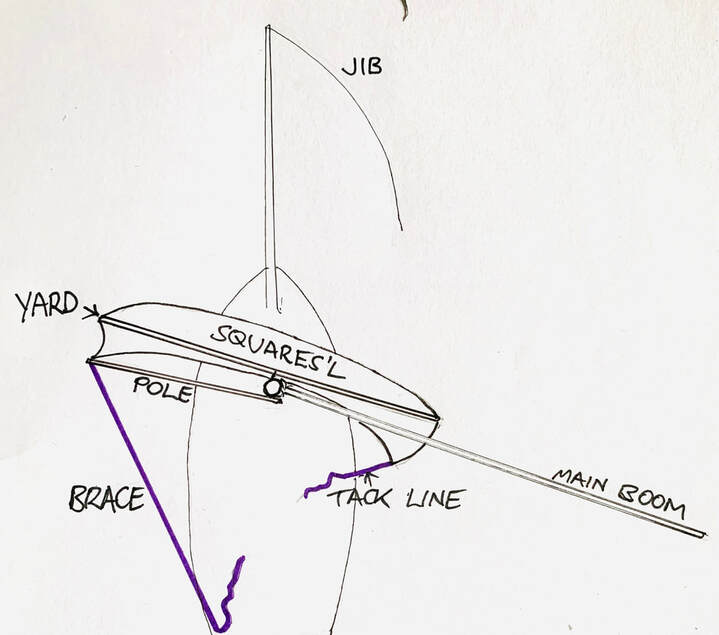
Diagram of squares'l from above.
Diagram of squares'l from above.
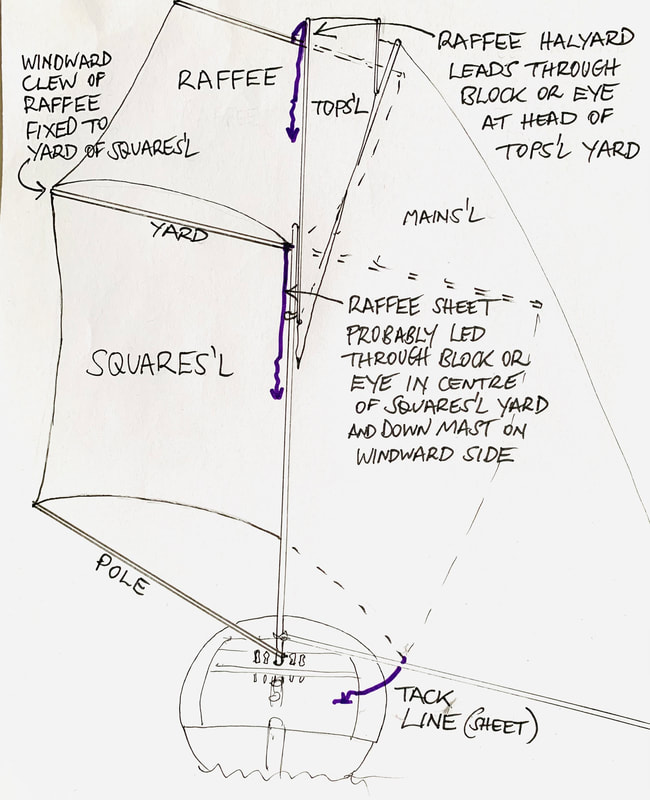
Viewed from aft.
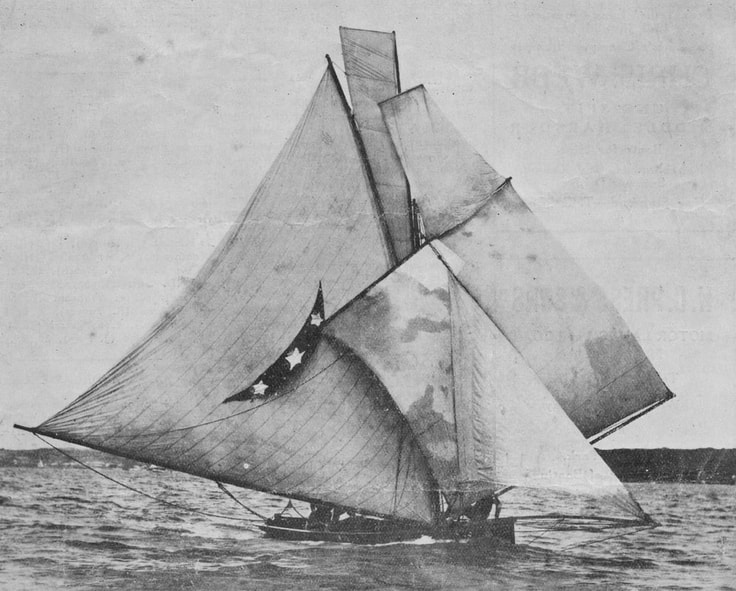
The early 18-footers also carried squares’ls and raffees, This is Aztec, early 1890’s. Robin Elliott collection.
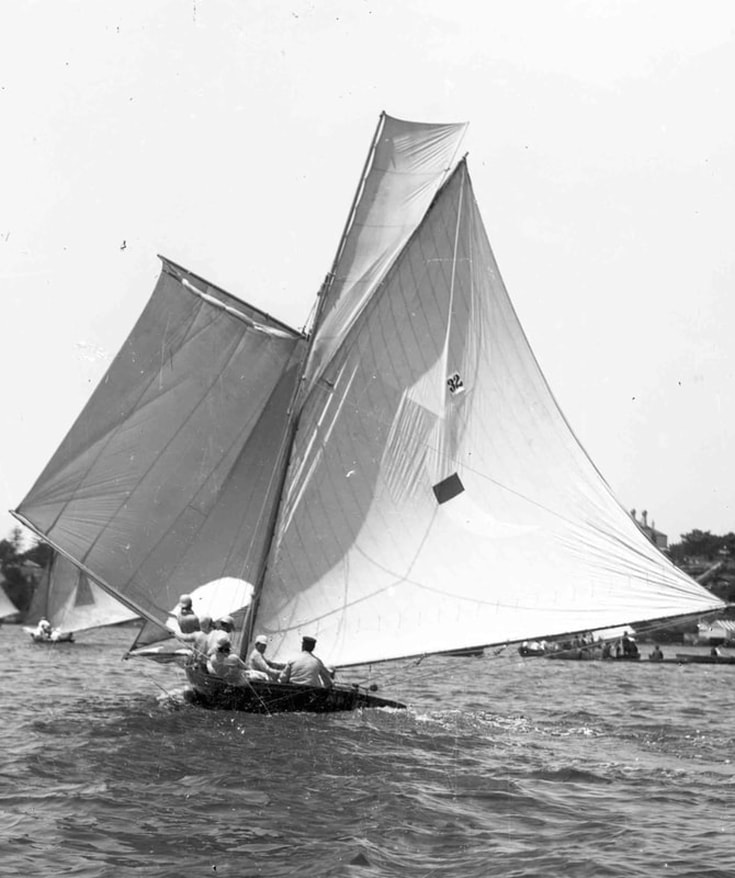
18-footer Ariel at the Balmain Regatta in 1894. A raffee is slung from the windward end of the squares’l yard in stops. This is the only indication we have of how they were set. Hall Collection ANMM.
This shot of the 22-footers Wonga and Vuna around 1896-97 shows Vuna carrying a squares’l and Wonga carrying a new-fangled spinnaker with a short yard at the head. Hall Collection, ANMM.
It is uncertain when the first spinnaker appeared on Sydney Harbour, but it appears to have been on a yacht. Since at least the middle of the 19th century open boats had been carrying balloon jibs or ballooners, deep full sails used when reaching, and some boats began to pole these out when the wind was aft from at least the 1880’s. Squares’ls were still generally favoured for square running up until the late 1890’s, when some open boats began to use what they referred to as spinnakers. But with a long history of squares’ls they couldn’t bring themselves to believe that a triangular-headed sail could provide enough drive, so the early open boat spinnakers were fitted with yards of various lengths, some straight and some curved. From the first they hauled their biggest spinnakers to the top of the tops’l with the halyard taken back to a pin on the top of the tuck (transom), and with longer poles they could spread much more canvas than any combination of squares’l and raffee. By the early 1900’s they had dropped the use of yards entirely. But the old terminology stuck, what many modern yachtsmen will call the guy is always referred to by skiffies as the brace, and the spinnaker sheet is referred to by older skiffies as the tack. When running square this line was led to windward of the mast and was called the square tack. As the 20th century unfolded spinnakers began to be carried ‘around the bow’ with the wind on the quarter or forward of it, and the sheet was referred to as the shy tack. The fact that the spinnaker poles tended to ‘sky’ when the spinnaker filled led to the adoption of a kicker, a line from the inboard end of the furthest-out pole, so approximately 8-10’ from the end, down through the eye of one of the chainplates and sometimes back up over the pole and down again. No kicker was attached to the end of the pole leading through a block on the end of the bumpkin and back into the boat until approximately 1930, and it was so clearly advantageous that it was universally adopted.
22-footers Keriki and Effie carrying spinnakers in the 1898-99 season. Effie has quite a large yard at the head of hers. It took a few years before they realised that they didn’t need them. Hall Collection ANMM.
